Soot Formation in Kerosene Flame Within a Model Gas Turbine Combustor, ANSYS Fluent
$200.00 $100.00 Student Discount
- In this project, the combustion of kerosene in a model gas turbine combustor, with all its complexities, was modeled using ANSYS Fluent.
- Soot formation in the combustion process was modeled with the Moss-Brooks model by selecting “C2H2” and “C2H4” species as precursors for surface growth, and the Lee model for oxidation.
- The geometry was created in SpaceClaim, and a mesh consisting of 51,427 elements was generated using ANSYS Meshing.
- The rates of nucleation, surface growth, coagulation, and oxidation, as well as the soot mass fraction and temperature in the combustor, were investigated in this study.
To Order Your Project or benefit from a CFD consultation, contact our experts via email (info@mr-cfd.com), online support tab, or WhatsApp at +44 7443 197273.
There are some Free Products to check our service quality.
If you want the training video in another language instead of English, ask it via info@mr-cfd.com after you buy the product.
Description
Description
Modeling the combustion process with all its complexities, such as swirl flow, mixing, chemical reactions, and secondary flow, as well as accurately computing the emissions, is crucial for designing modern combustors. Soot is a very common emission that appears in reach premix and diffusion flames and is the main cause of flame radiation; therefore, it is imperative to model it with high precision. Soot formation is typically considered in four steps:
1. Production of precursor species (C2H2, C2H4, and C6H6).
2. Reaction of these species to form the initial polycyclic aromatic hydrocarbons (PAHs) and subsequent growth of these PAHs to form soot particles.
3. Growth of particles by surface reactions and coagulation with other particles.
4. Oxidation of soot particles upon contact with oxidizing molecules (O2 and OH).
In this simulation, we aim to simulate the soot formation process (as outlined above) within a model gas turbine combustor, featuring swirl air and fuel inlet flow, along with a secondary air flow to ensure that the flame remains away from the combustor walls.
The combustor is modeled as a 2D structure with an axisymmetric boundary condition along the central axis line. Fuel inlet is located between two swirl air inlet that known as double swirl combustor. Combustor dimensions is 7.5 cm in diameter and 29 cm in length. Air inlet has a velocity of 0.5 m/s axial and 1 m/s radial and fuel is kerosene that inject to combustor with 0.02 m/s axial. With this inlet assumptions the swirl number of combustor inlet that means the axial flux of tangential momentum to axial flux of axial momentum is 2 so it’s a high swirl combustor. The secondary air inlet velocity is also 0.5 m/s.
The geometry is designed in SpaceClaim® and meshed using ANSYS Meshing®. The Mesh type is structured with the element count being 51,427.
Methodology
In this simulation, the k-ε Realizable model was chosen for modeling the turbulence of flow in the combustor due to its accuracy in the combustion process and low computational cost. The Energy equation is also activated.
In the species tab, the kinetic and thermos files of kerosene were inputted into Fluent. It contains 24 species and 65 reactions. Finite rate is selected for turbulence-chemistry interactions, and the stiff chemistry solver is chosen with the integration method of using an ISAT table.
In the soot modeling tab, the Moss-Brooks model is chosen, and “C2H2” and “C2H4” are defined as precursor species for surface growth. Also, the Lee model is chosen for the oxidation model because it is an extended model that determines OH radicals as oxidizers as well as O2 molecules. In this simulation, the soot-radiation interaction is activated too.
The radiation model was activated, and the Discrete Ordinates (DO) model was chosen for modeling heat transfer by radiation.
Results
Contours of temperature, kerosene and CO2 mass fraction, and soot volume fraction are presented in the axial plane, along with contours of the rates of nucleation, surface growth, coagulation, and oxidation of soot. The mean temperature at the outlet is 910.95 K, the maximum temperature is 2050 K, and the soot average temperature is 1550 K. Soot is formed in the fuel-rich region of the flame and starts to oxidize when it enters the high-temperature region of the flame and encounters oxidizer molecules. Additionally, the contours show that the secondary inlet air performs very well, keeping the high-temperature gases away from the combustor walls. 3D contours of temperature and air streamlines are also shown.
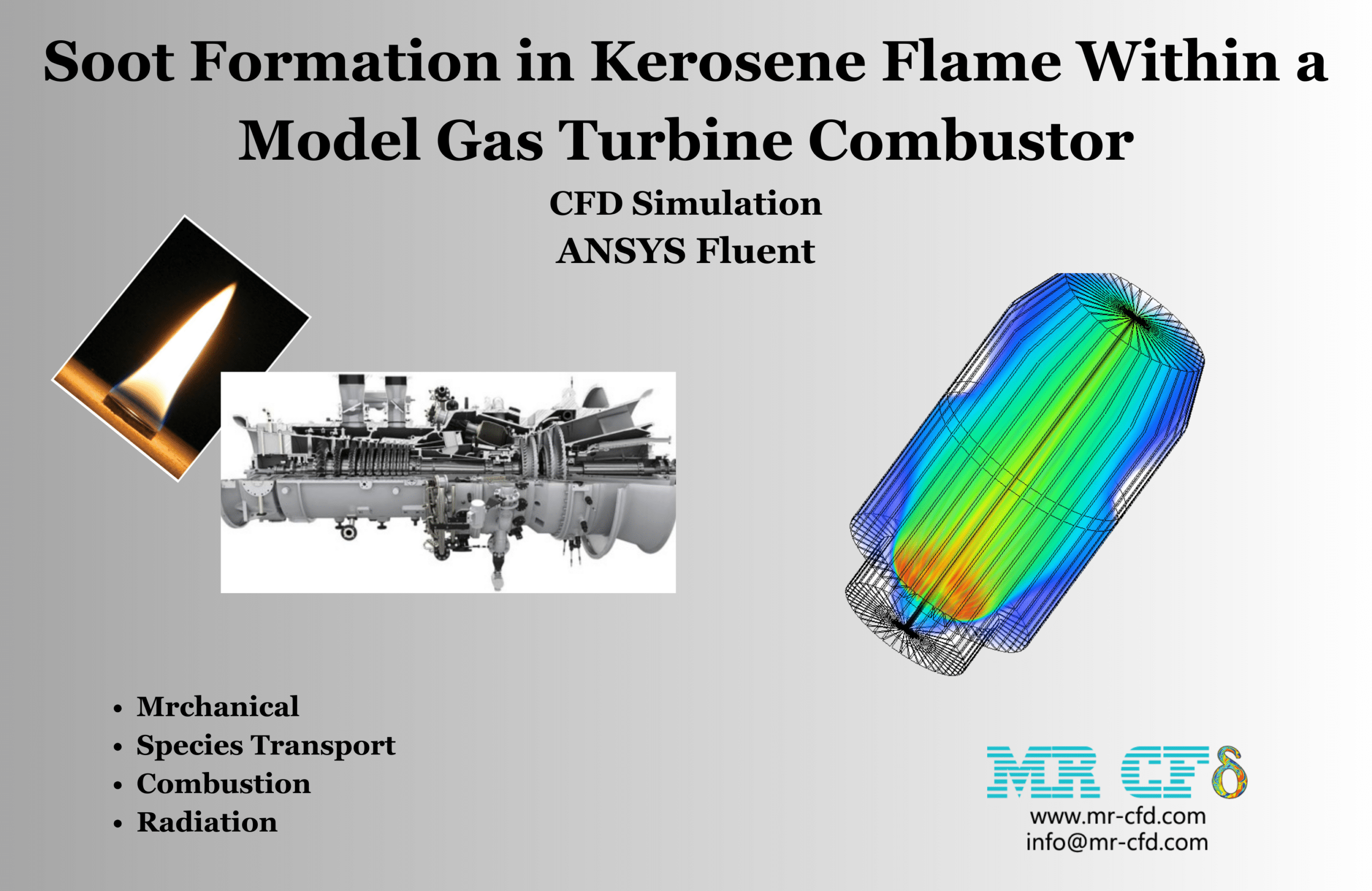
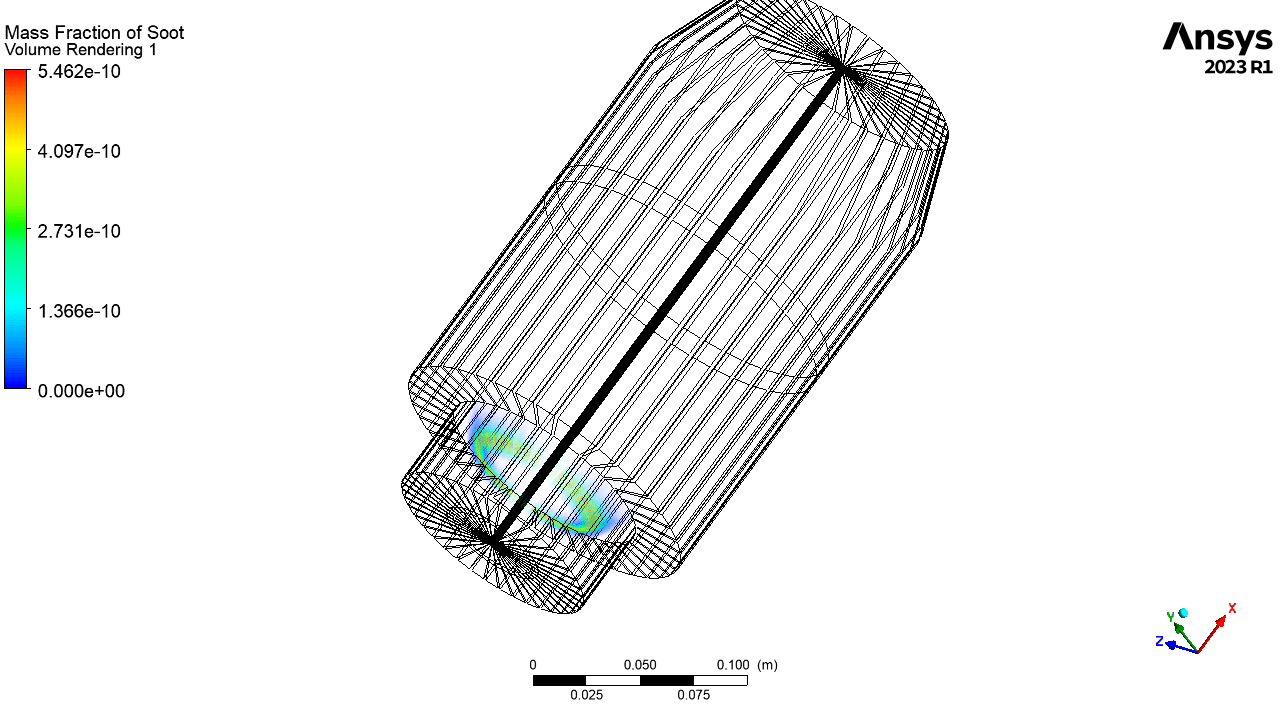
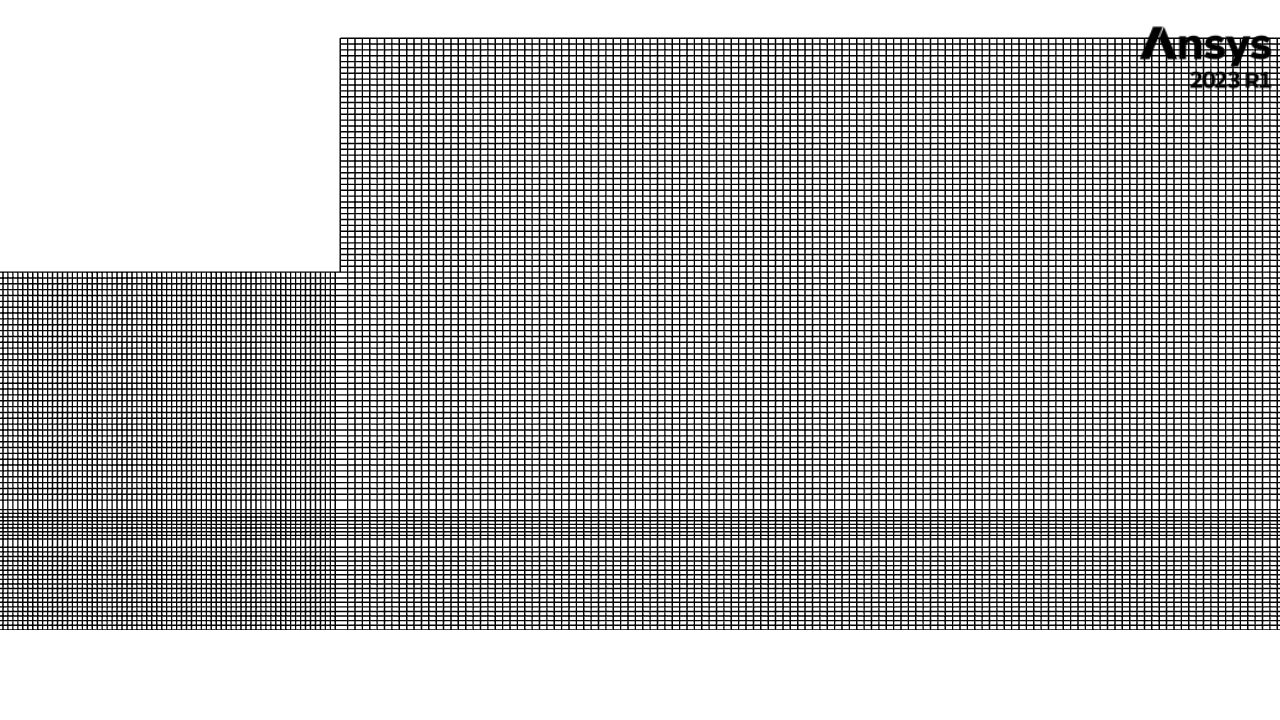
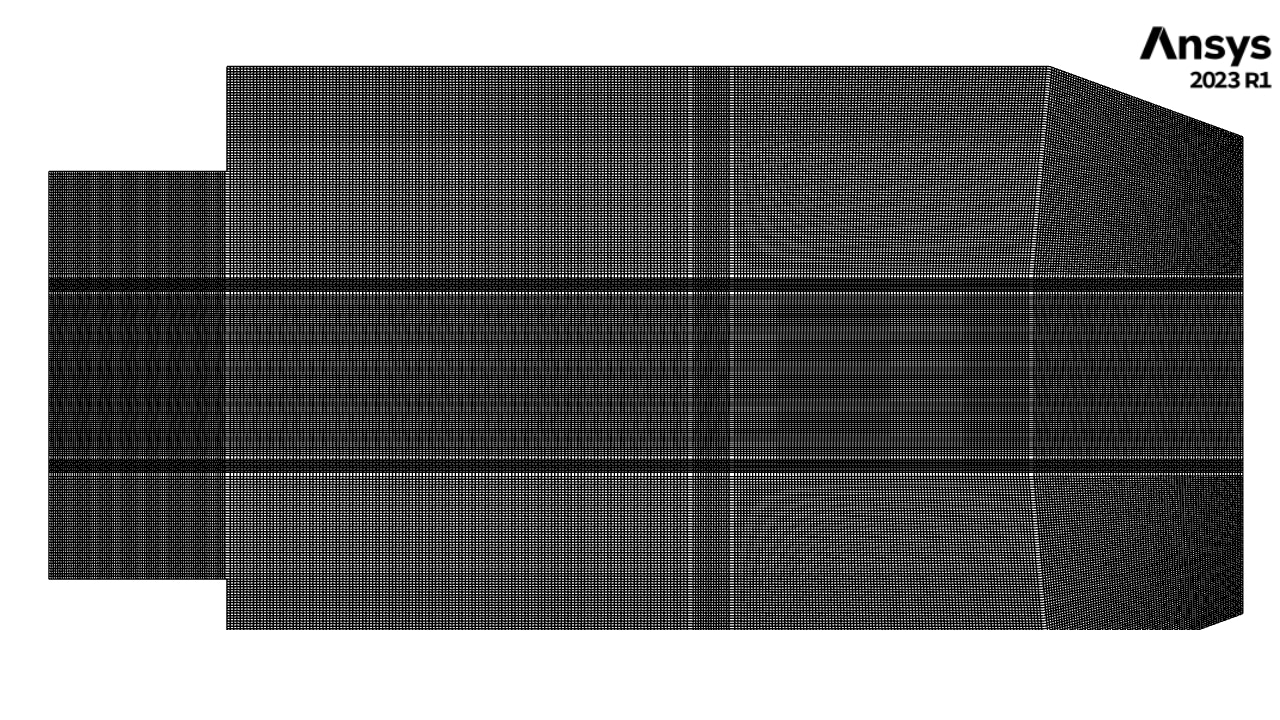
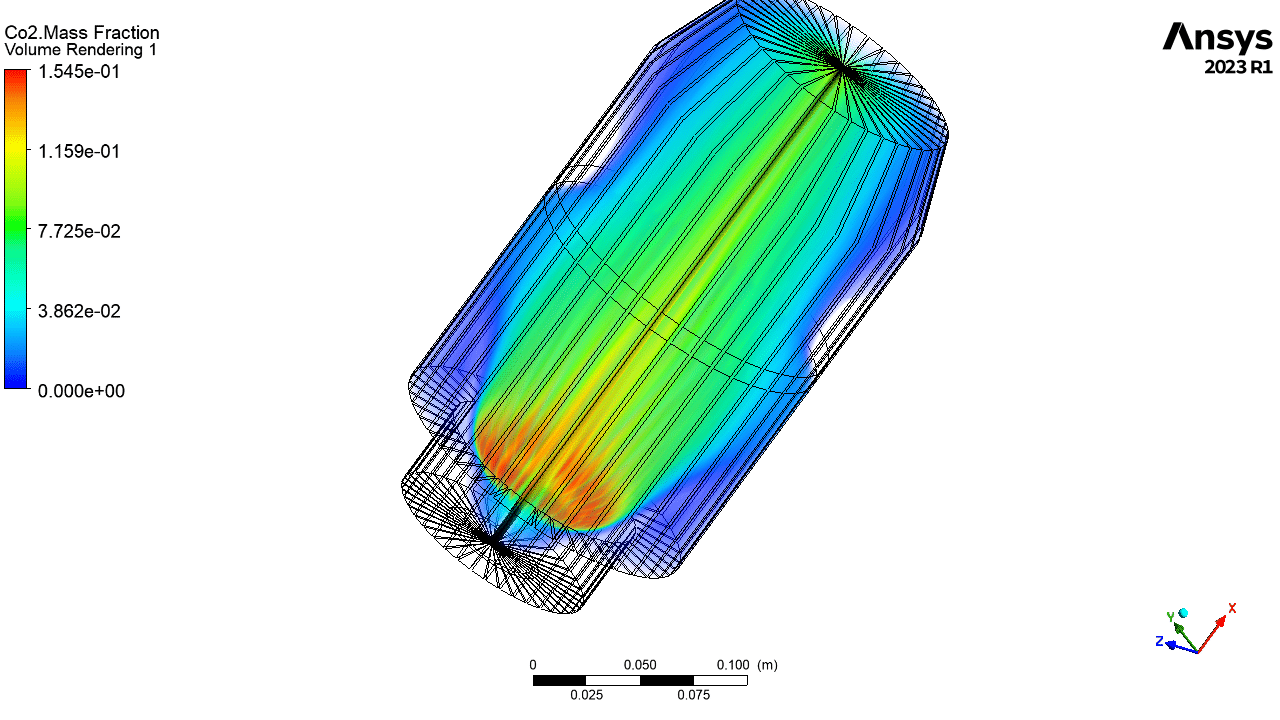
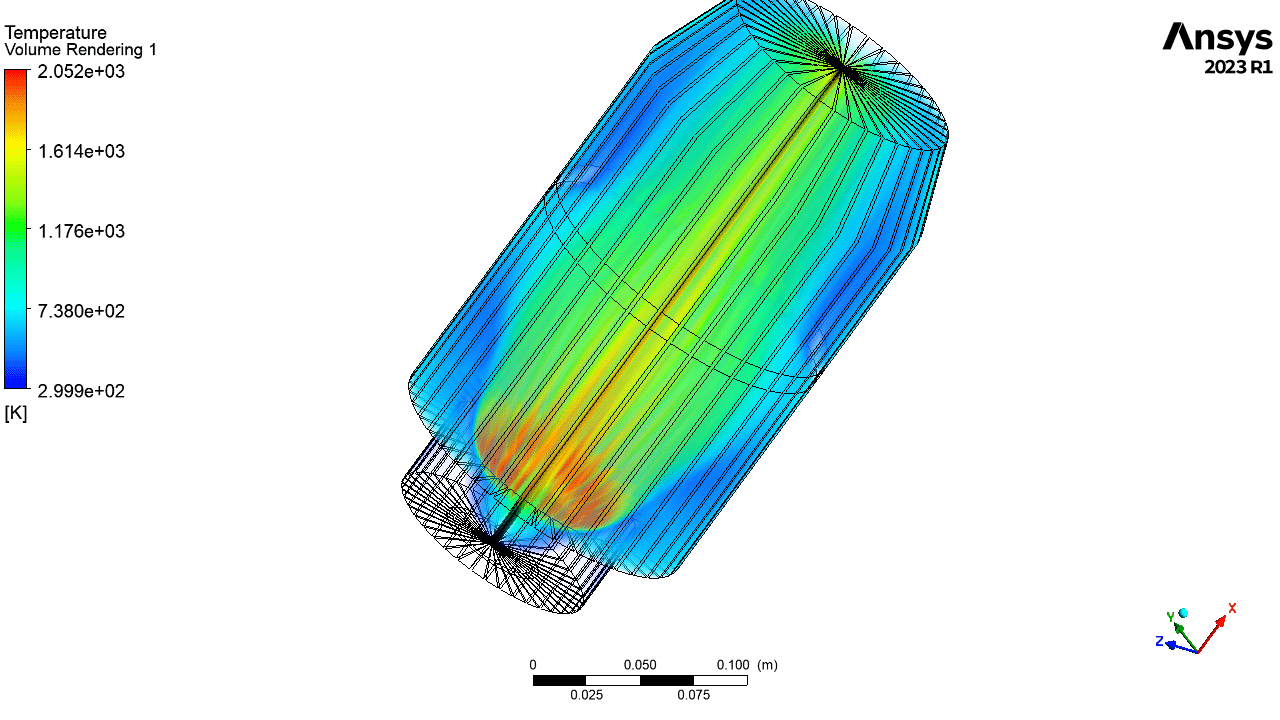
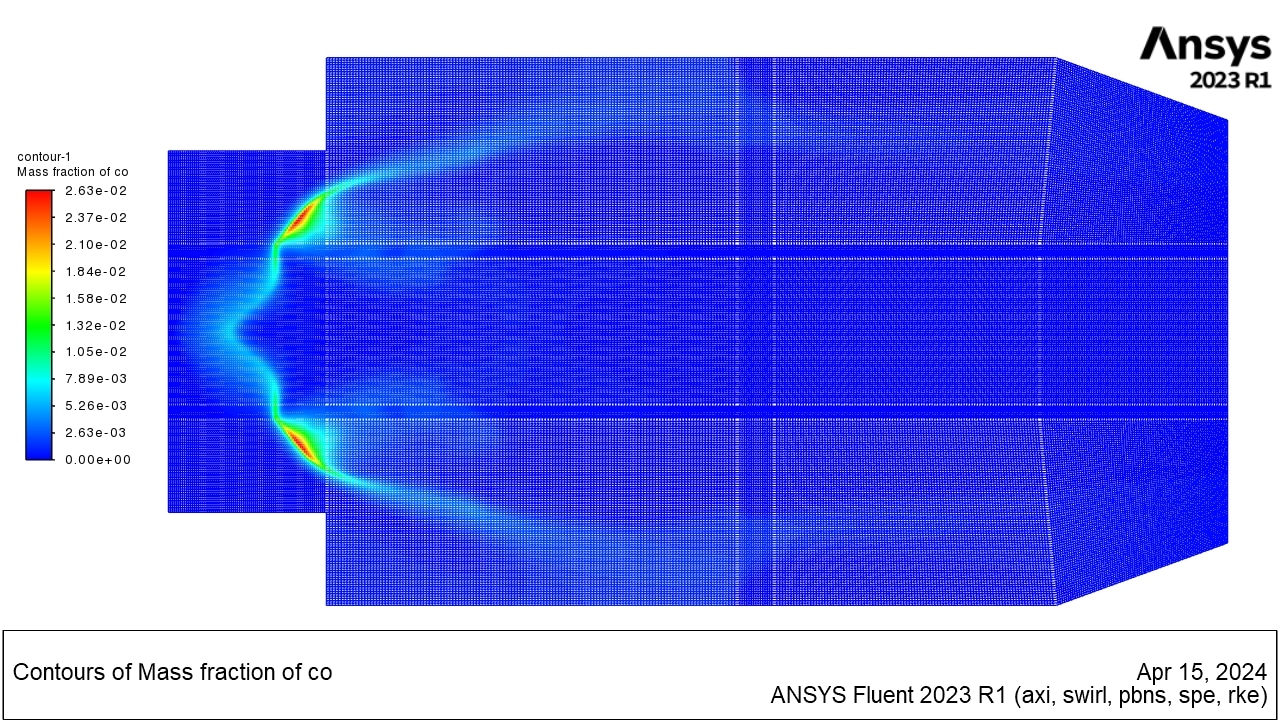
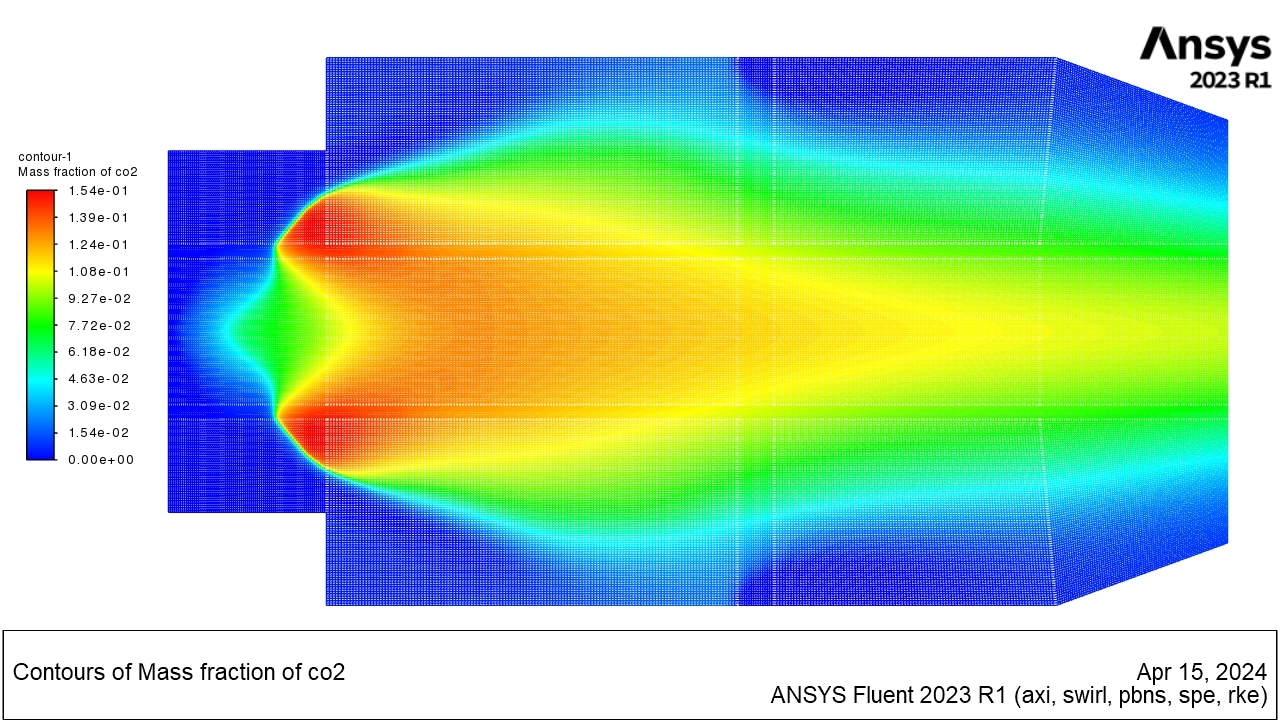
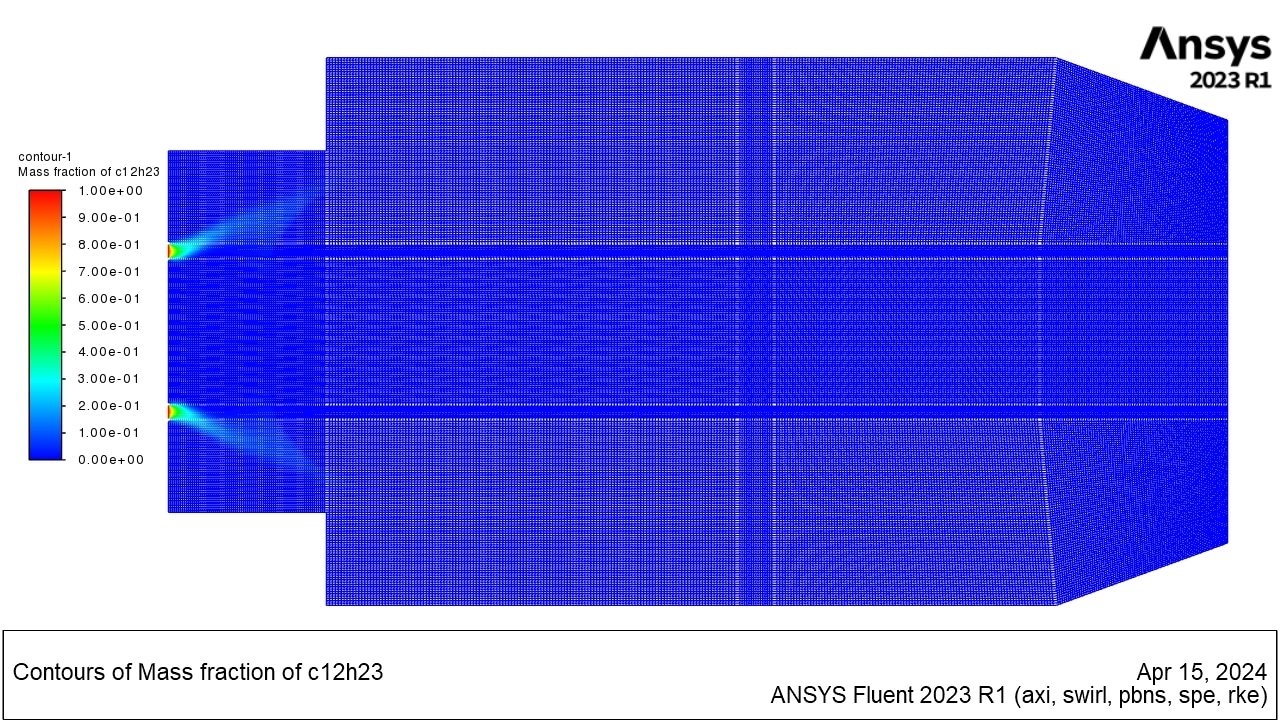
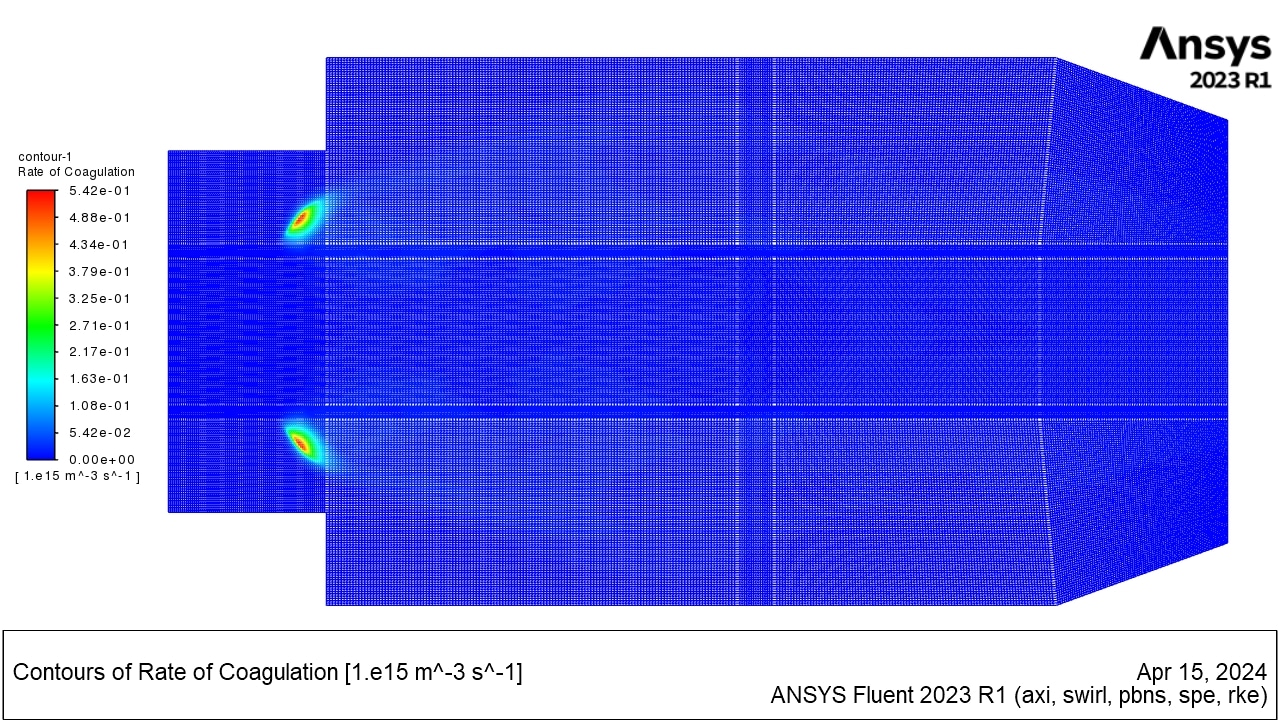
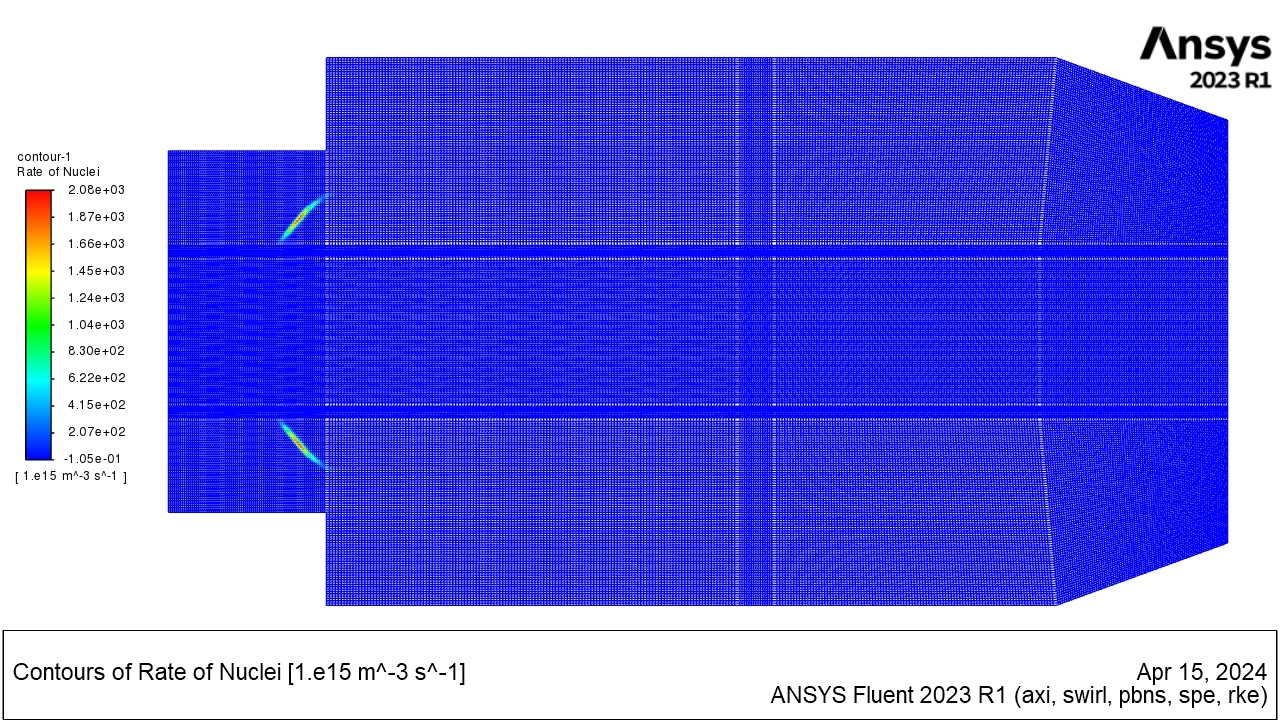
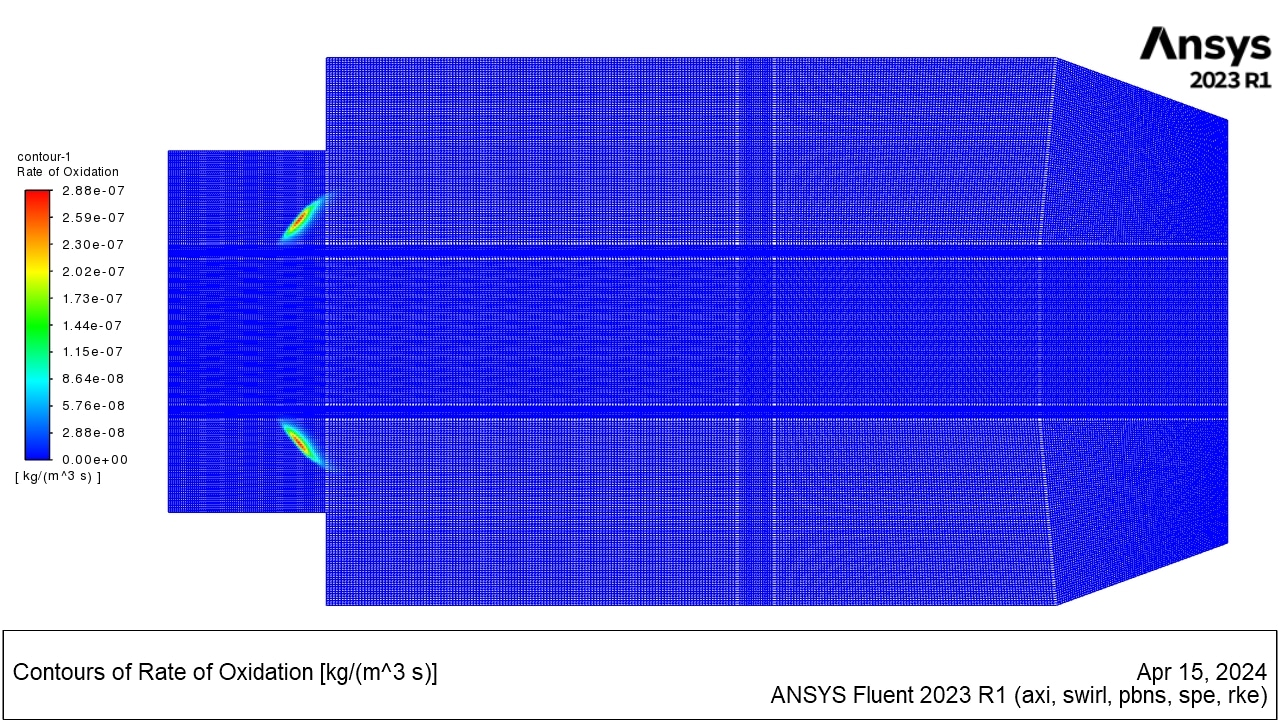
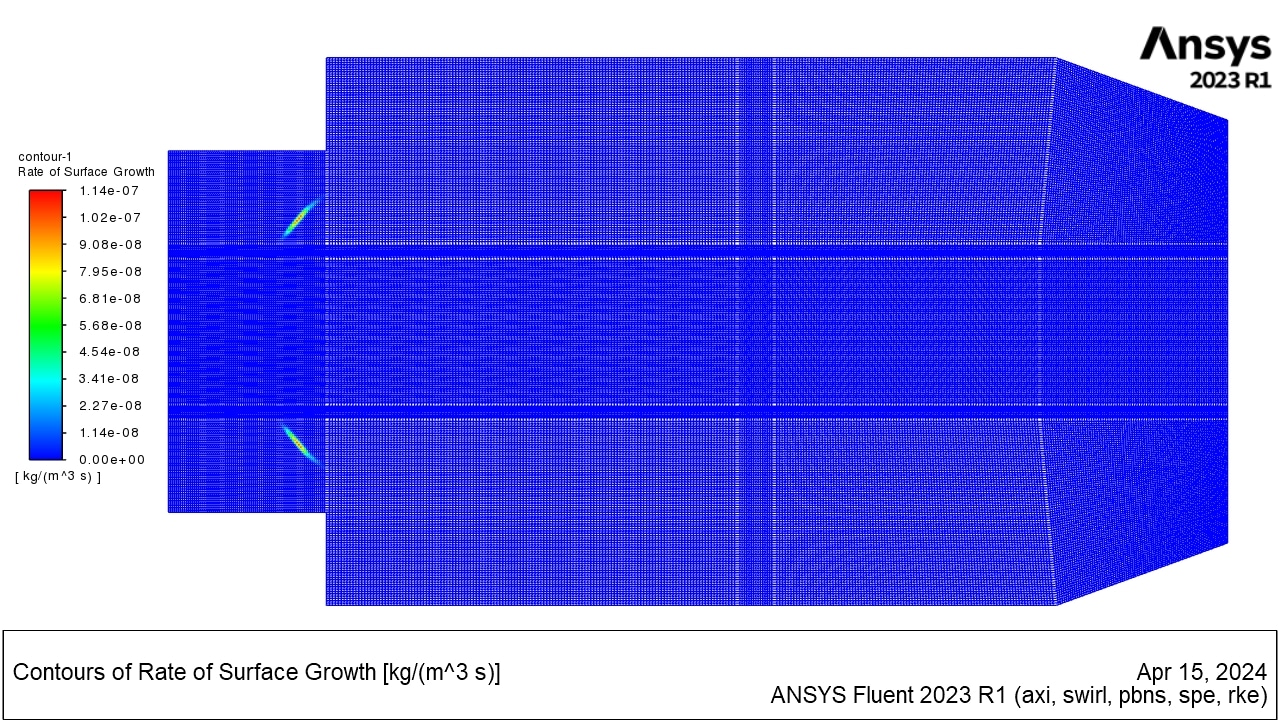
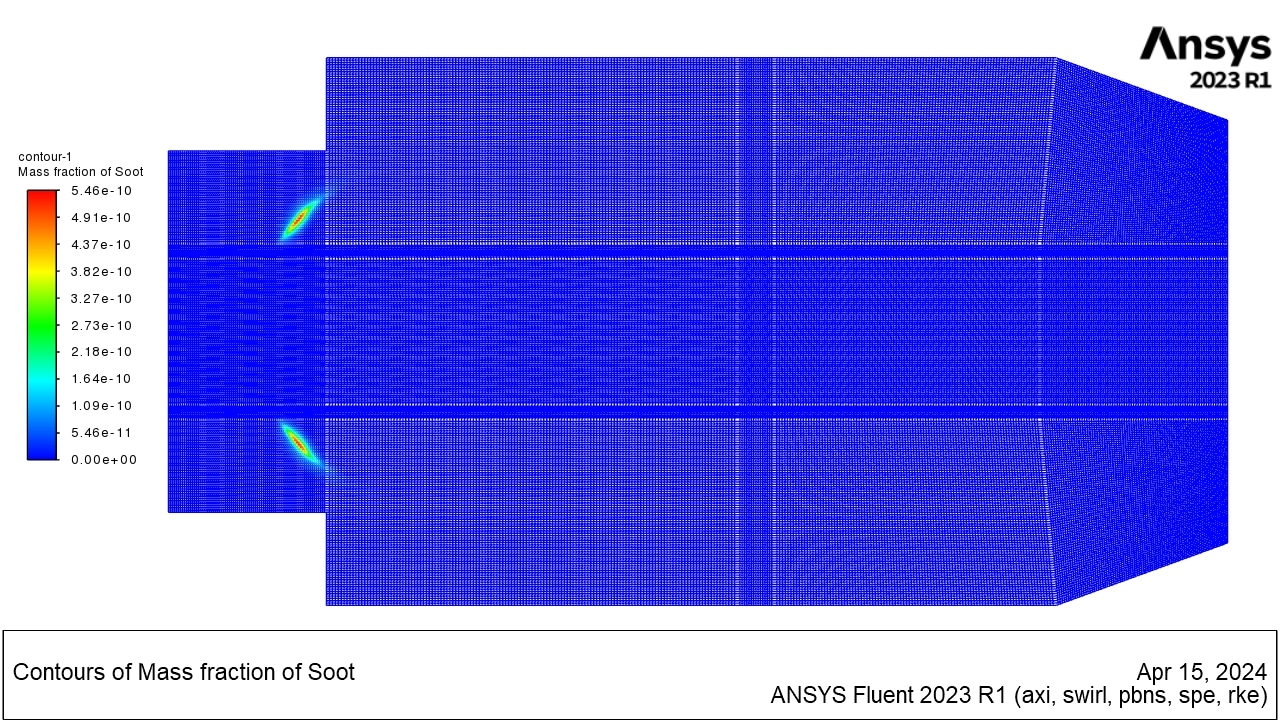
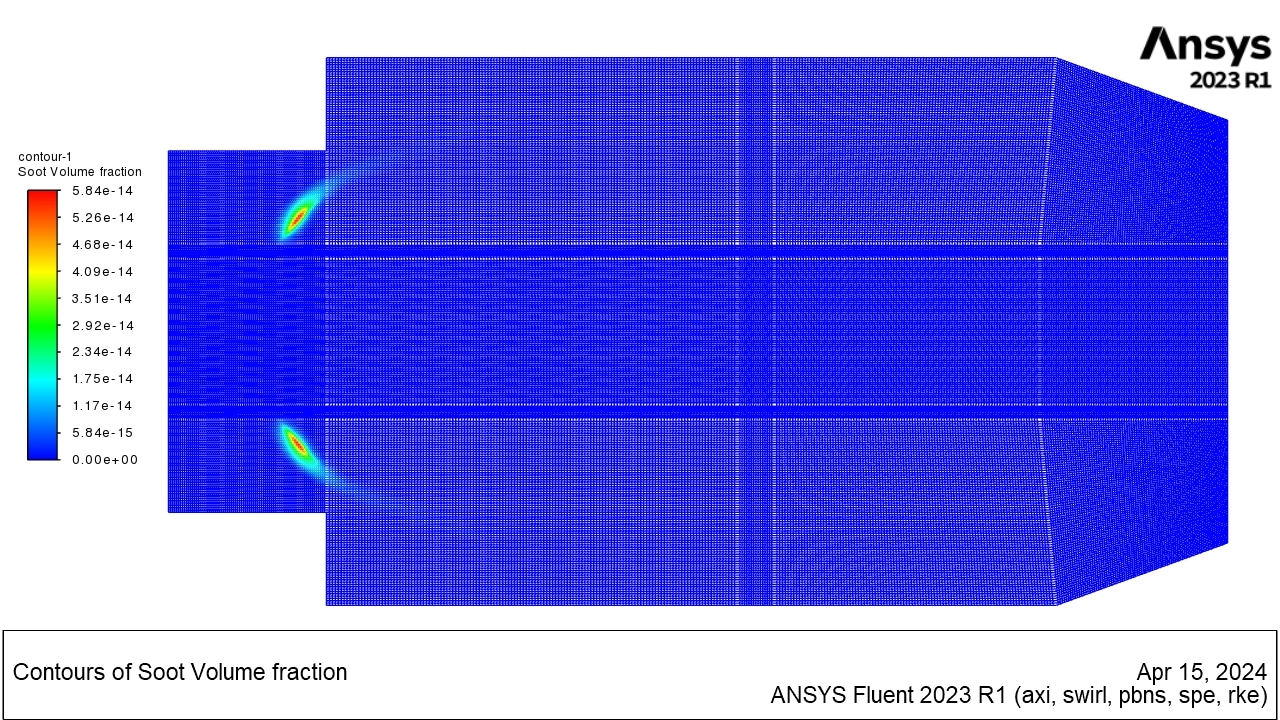
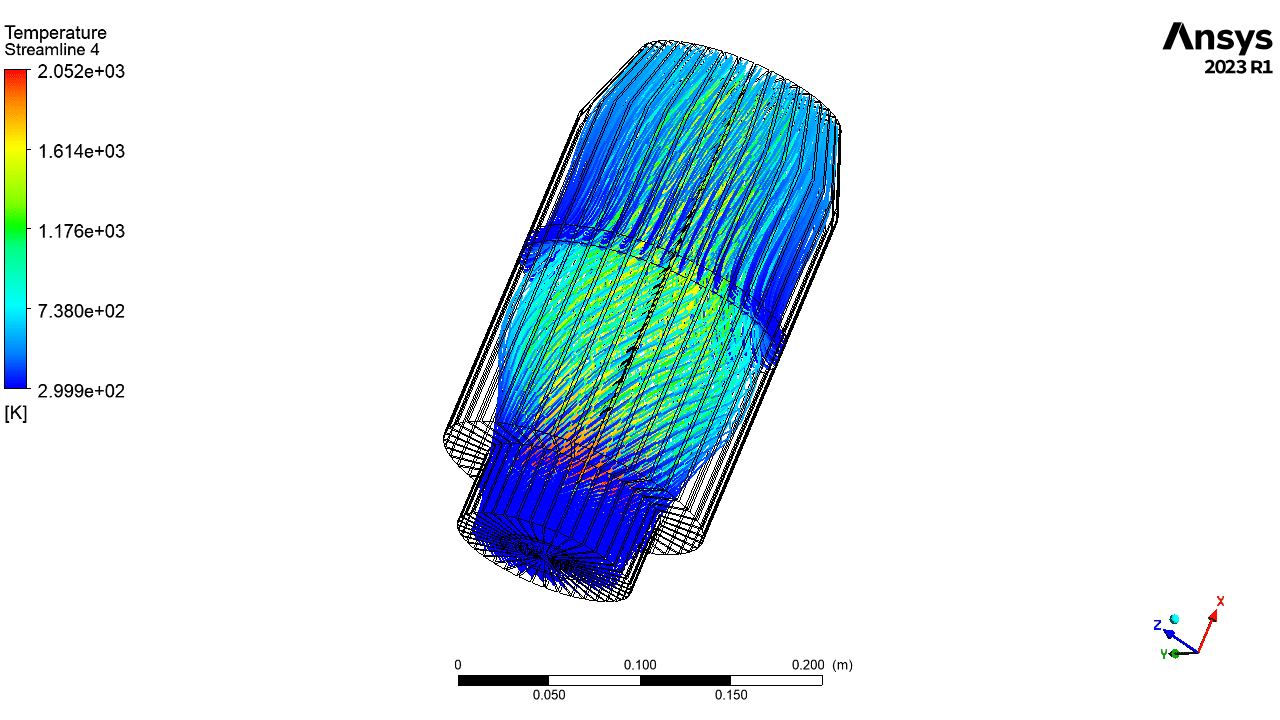
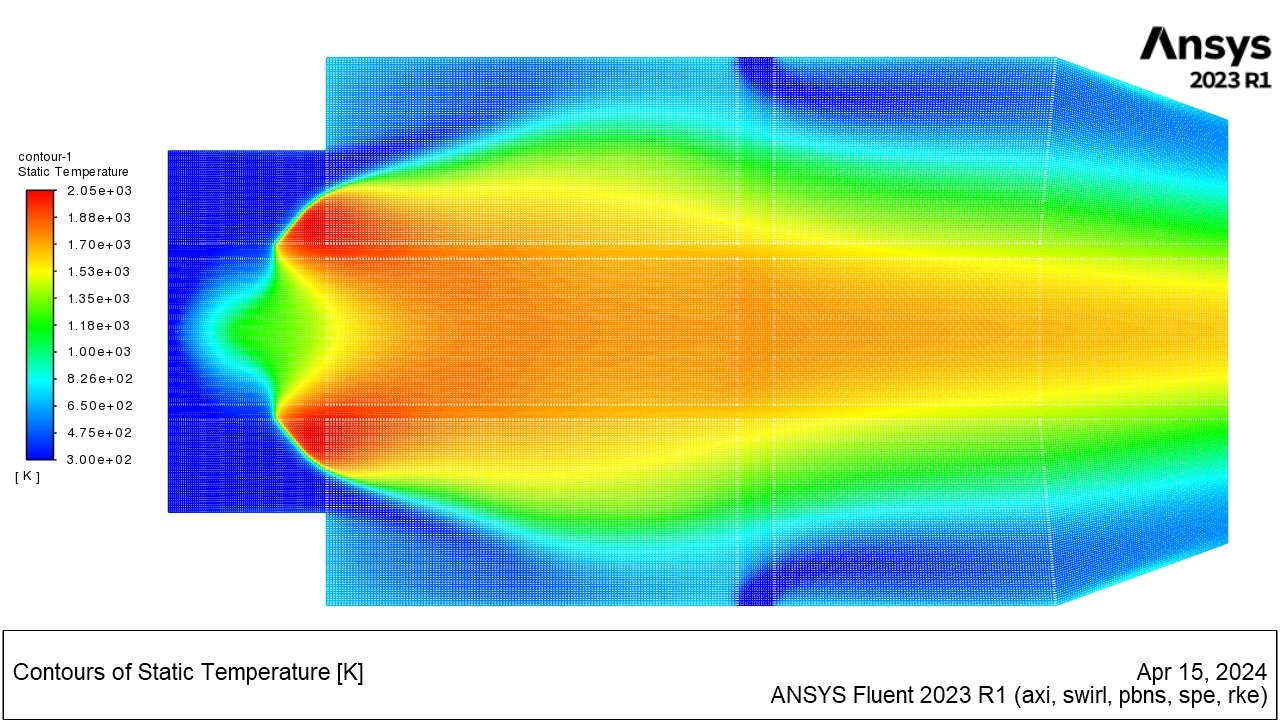
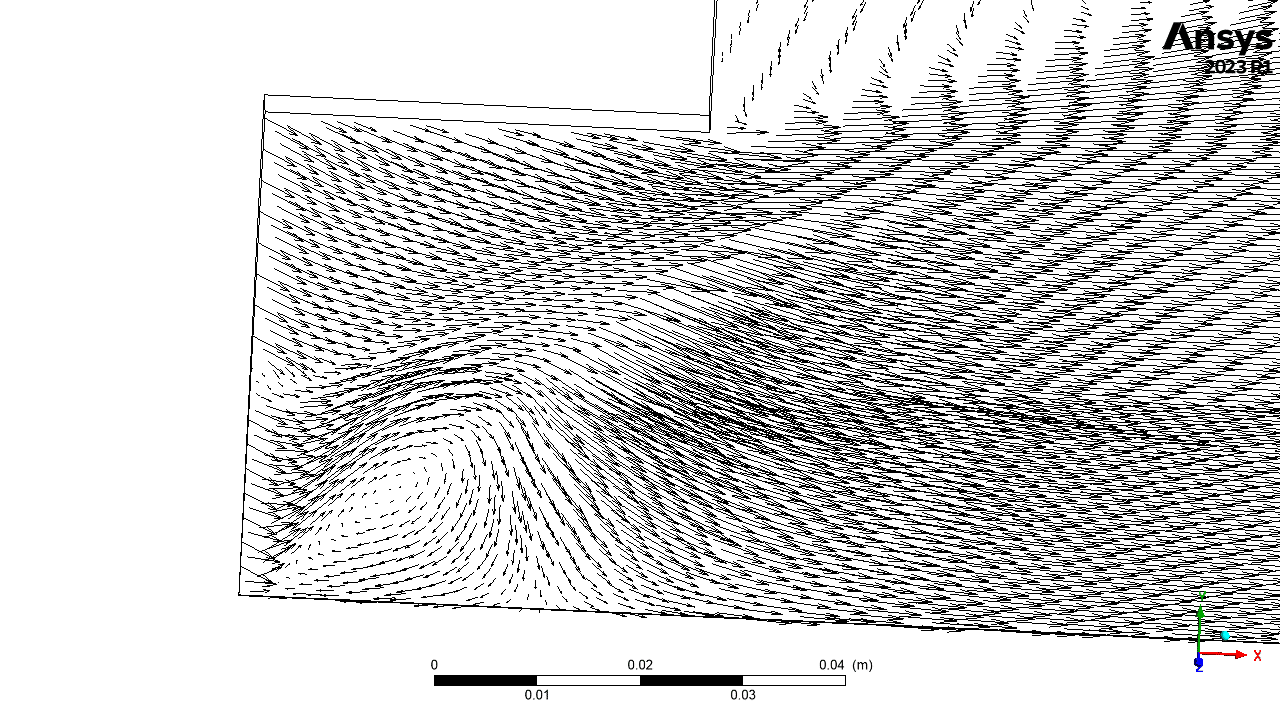
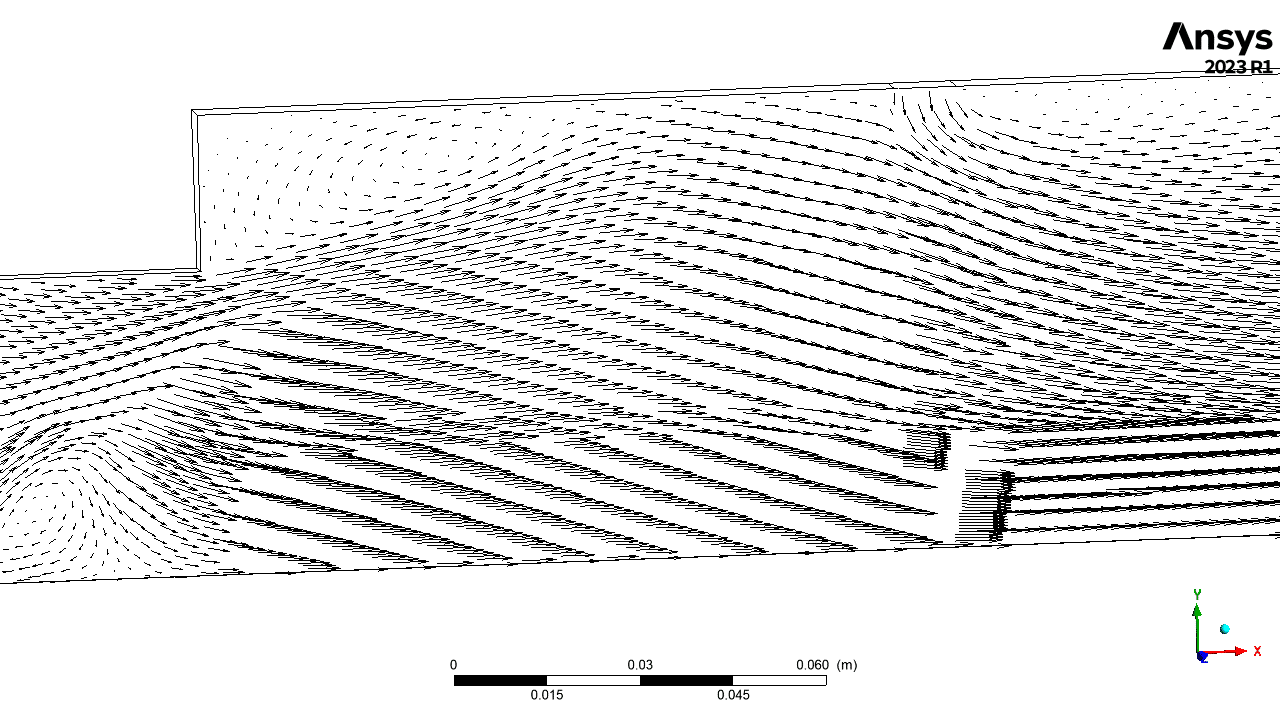

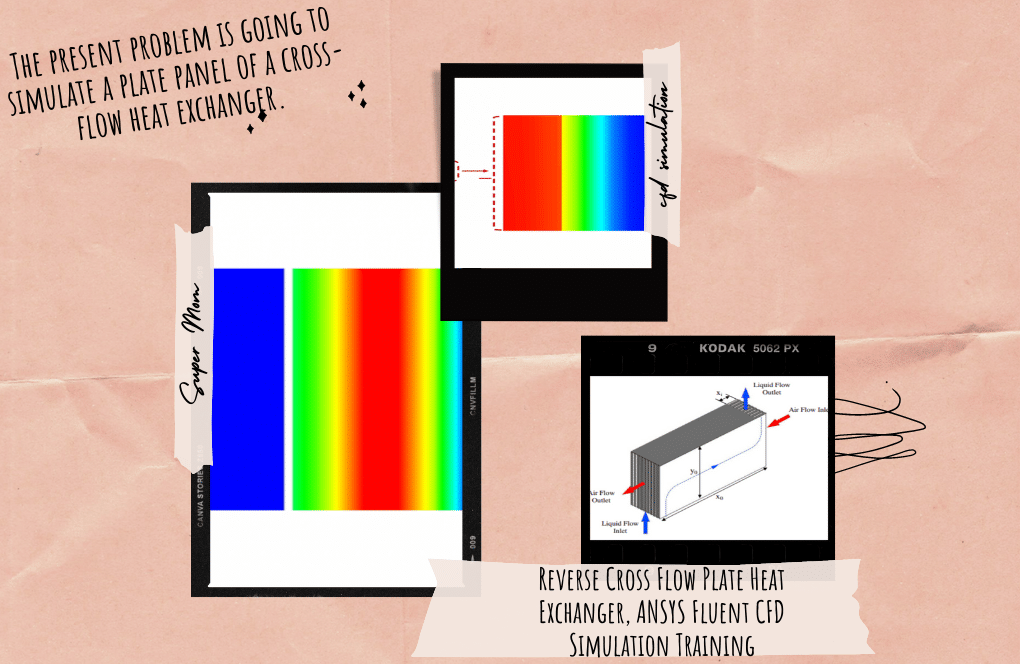


Reviews
There are no reviews yet.